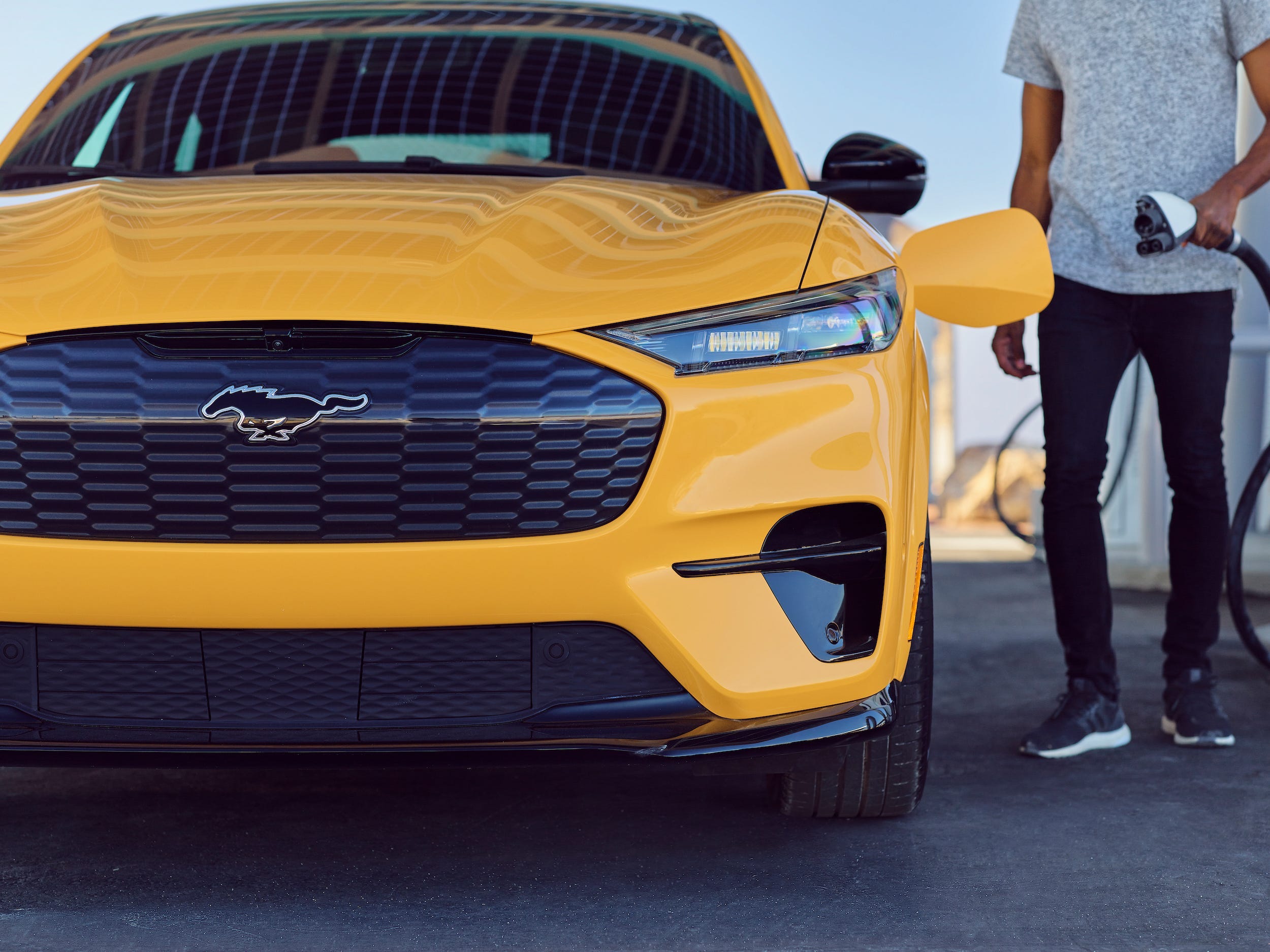
Ford
- A Mustang Mach-E driver had to pull over four times to find a charging station during a 200-mile trip.
- Axios editor Dan Primack said he felt panicked as he searched for a charger that would work with a non-Tesla car.
- Increasing charging infrastructure is a key step toward electrifying transportation in the US.
- See more stories on Insider's business page.
Charging infrastructure poses a major hurdle for electric-vehicle adoption and one man found that it represents an even greater difficulty for drivers who don't own a Tesla.
During a drive from Boston to New York City, Axios editor Dan Primack said his battery dropped past 23% before he was able to find a charging station that would work with his Ford Mustang Mach-E.
"EV owners not only need to plan, but also need backup plans when the original ones fall through," Primack wrote.
Driving range anxiety has been identified as one of the main issues the US faces when it comes to the electrification of transportation. A June study found that last year one in five EV owners switched back to a gas-powered car due to the hassle of charging their electric car.
Primack said while the Mustang Mach-E, which has an estimated range of about 230 miles per full charge, has been efficient for short drives, he faced some difficulty on the over 200-mile commute to New York City. During what should have been a simple drive, he was forced to pull over at four different charging stations in order to find a station that he could use to recharge his Mach-E.
At two of the four stations, he was only able to find Tesla chargers, and at one there were no chargers. He said he was not able to recharge his car until he found the fourth station in a parking garage.
Primack said he felt "panic" during the experience - a feeling he had not expected to experience in an area of the country that had prioritized electrification. He pointed out that his trip cut through high traffic roads in the northeast - an area that was known for being early EV adopters.
His account raises the question of how much more stressful his trip could have been, had it taken place in a more rural area.
Efforts to expand the charging infrastructure in the US
Increasing the US network of charging stations is a top priority in President Joe Biden's infrastructure bill, which sets aside billions of dollars for EV charging.
As of February, there are just under 100,000 electric car charging stations in the US, according to a report from I. Wagner, a researcher on traffic and motor vehicle manufacturing. To date, Tesla supercharging stations alone account for over 25,000 stations, according to data from the company's website. While regular Tesla stations can be used with non-Tesla EVs through a special adapter, supercharging stations are not yet compatible with other electric cars.
Tesla CEO Elon Musk said on Twitter earlier in July that he plans to make Tesla's entire charging network accessible to all EV drivers by the end of the year. Though, the CEO said during the company's earnings call on Monday that non-Tesla drivers will have to pay extra to use the company's supercharging network and would likely have to purchase an additional adapter.
"It is our goal to support the advent of sustainable energy," Musk said at the meeting. "It is not to create a walled garden and use that to bludgeon our competitors, which is sometimes used by some companies.
For now, Primack's story highlights the need for greater charging infrastructure in the US, as well as the advantage Tesla holds over its competitors when it comes to EV charging.

